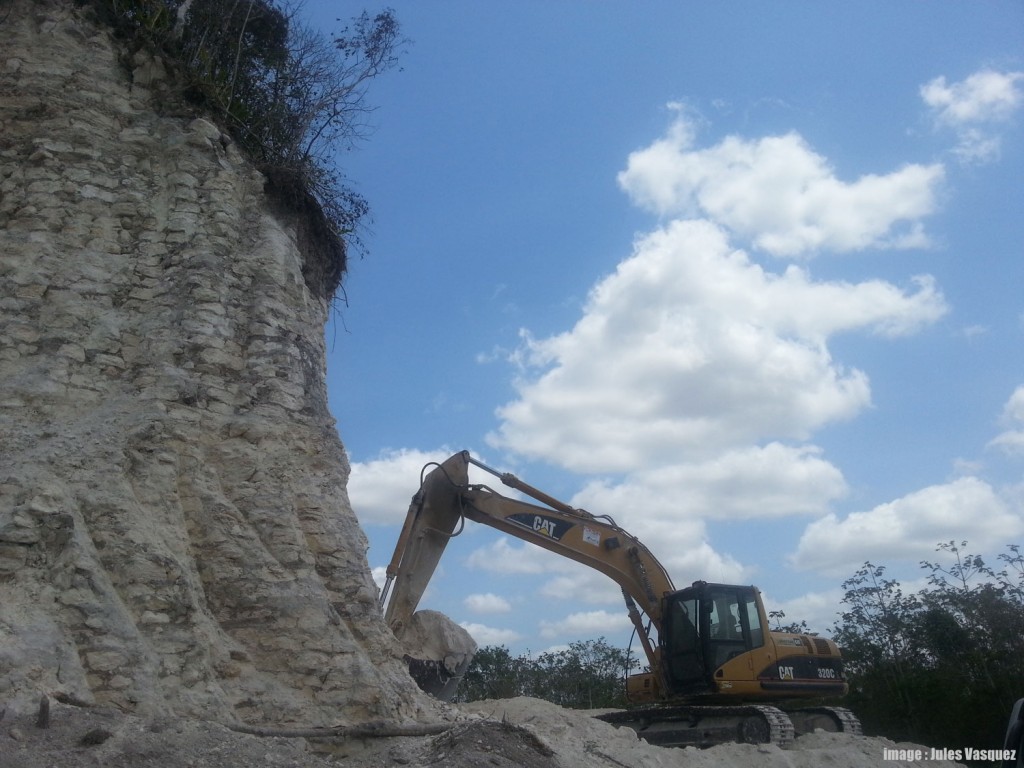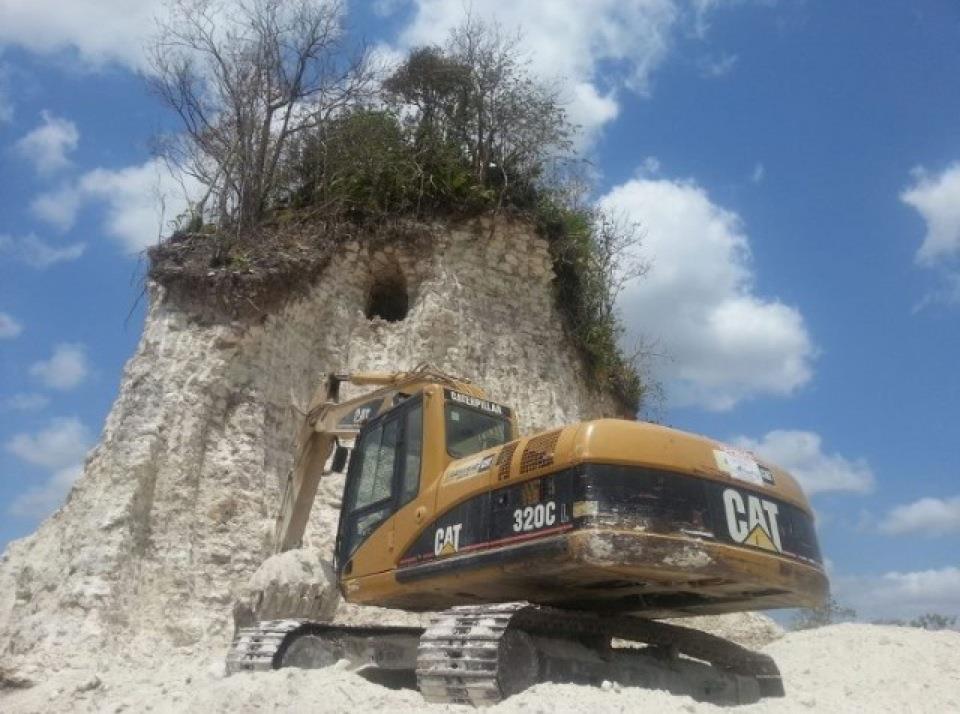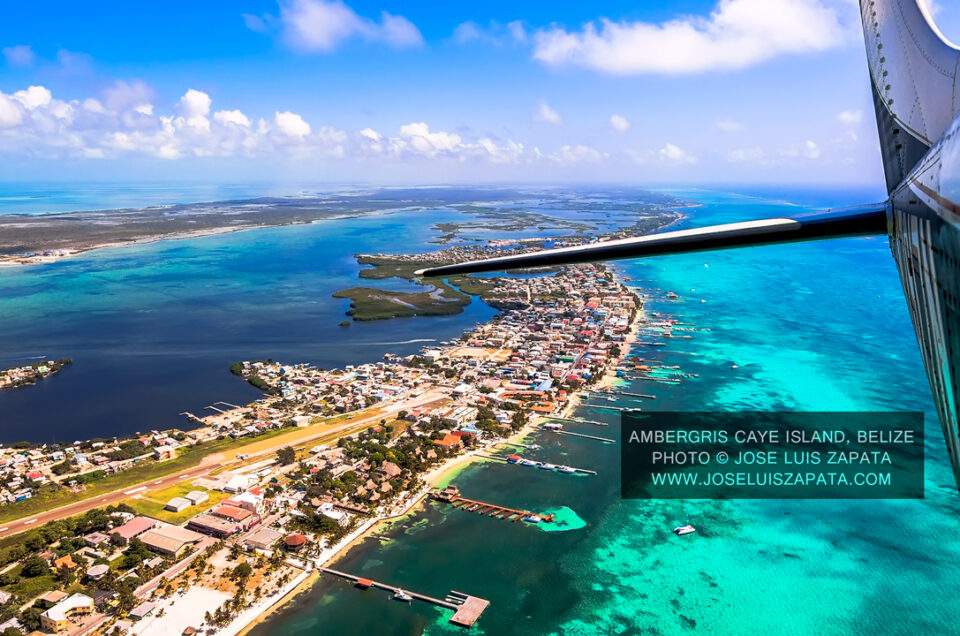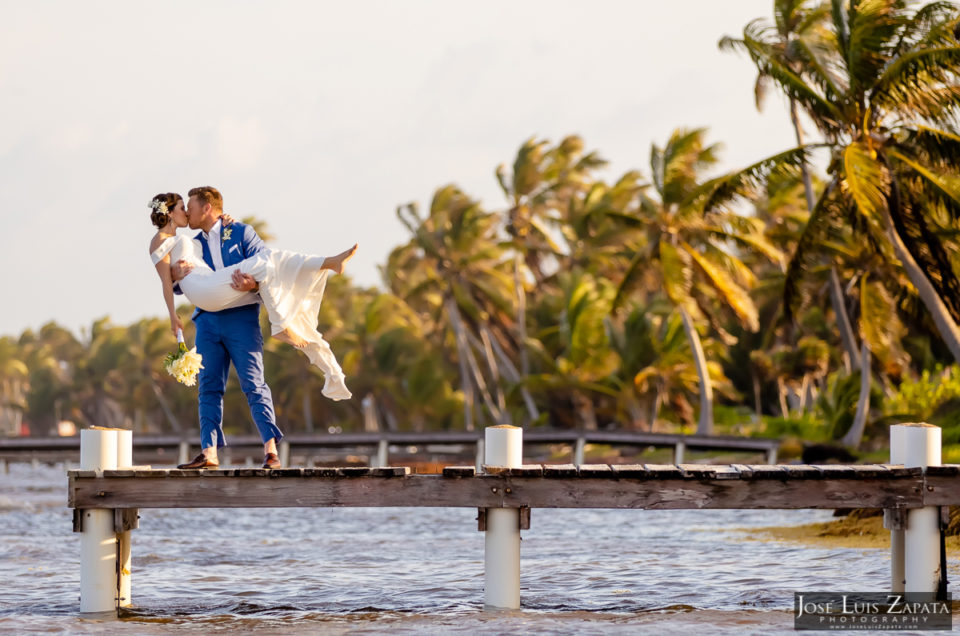Nohmul Maya Temple Destroyed by Bulldozers in Belize
Our entire country, Belize, is ranting about an incident that happened this past week. A construction company that needed material for a road-building project bulldozed a more than two thousand year old Maya Temple known as Nohmul. This Maya Temple is located in Northern Belize.
I have visited many of the archaeological sites in Belize and have even documented weddings and fashion photo shoots at these magnificent temples. Every time I am at one these Mayan sites, I always pause to admire the beauty in them. I am fascinated by the detailed carvings and precise architecture found in the designs. I even witnessed a sunrise at Caracol Maya Site during the Spring Equinox last year 2012, the year of the Maya.
It is very disturbing to think that there are humans out there with no respect to our culture and history. Can you imagine if other sites like Xunantunich, Altun Ha, Caracol, Lamanai, to name a few, were used for road fill before they were properly excavated? We would not have these magnificent, millennia-old, sacred temples displaying our rich Maya heritage that tourists pay thousands of dollars to visit. There are even couples who get married in these Maya Temples but now, none of us will ever live to experience a properly excavated Nohmul Maya Site. The damages are catastrophic and irreversible.
I personally believe that it is inexcusable and these acts should be punishable to the fullest extent of the law. Also, while Nohmul cannot be restored, we should take this as a learning experience and properly label all archaeological sites so that this does not happen again.
JLZ.
Below is some information on the Nohmul Maya Site that I found on the NICH website.
Nohmul, meaning “Great Mound,” is 20 meters above sea level and is situated on a low, limestone ridge east of the Rio Hondo between Orange Walk and Corozal. Nohmul lies among sugarcane fields and is actually the highest landmark in the Orange Walk/ Corozal area. It is about a mile from the Northern Highway between San Pablo and San Jose.
The site was first recorded in1897 by Thomas Gann. In 1908 and 1909, Gann returned to the site to dig what he thought were burial mounds containing polychrome vessels and human effigy figures. Gann continued excavating up to 1936 uncovering tombs and caches which yielded human bones, jade jewelry, shells, polychrome vessels, chultuns, flint and obsidian. Most of these finds were taken to the British Museum. Later on A. H. Anderson and H.J. Cook visited Nohmul to inspect damages to the site. In 1973, 74, and 78, Norman Hammond (then with Cambridge University) mapped the site. Hammond returned in 1982 to do a more intensive Nohmul Project which lasted until 1986.
Hammond’s work suggests that Nohmul was first occupied in the Middle Pre-Classic Period. Occupation of the site during the Late Pre-Classic Period was associated with the use of drained fields at Pulltrouser Swamp to the east of the center. By Early Classic times, it is possible that the site functioned as a regional center, and that it governed much of the area around the modern communities of San Jose and San Pablo. During the Late Classic Period the site’s fortune waned and it was gradually abandoned. During the Terminal Classic/ Early Post-Classic the acropolis was re-used as a residential area. Today the ruins of Nohmul represent a major ceremonial center with twin ceremonial groups, ten plazas and a sacbe or raised causeway. There is at least one ballcourt. The main structure is a 50 by 52-meter structure that is 8 meters high. Unfortunately, the site continues to be destroyed by road construction crews who bulldoze the mounds for gravel.







